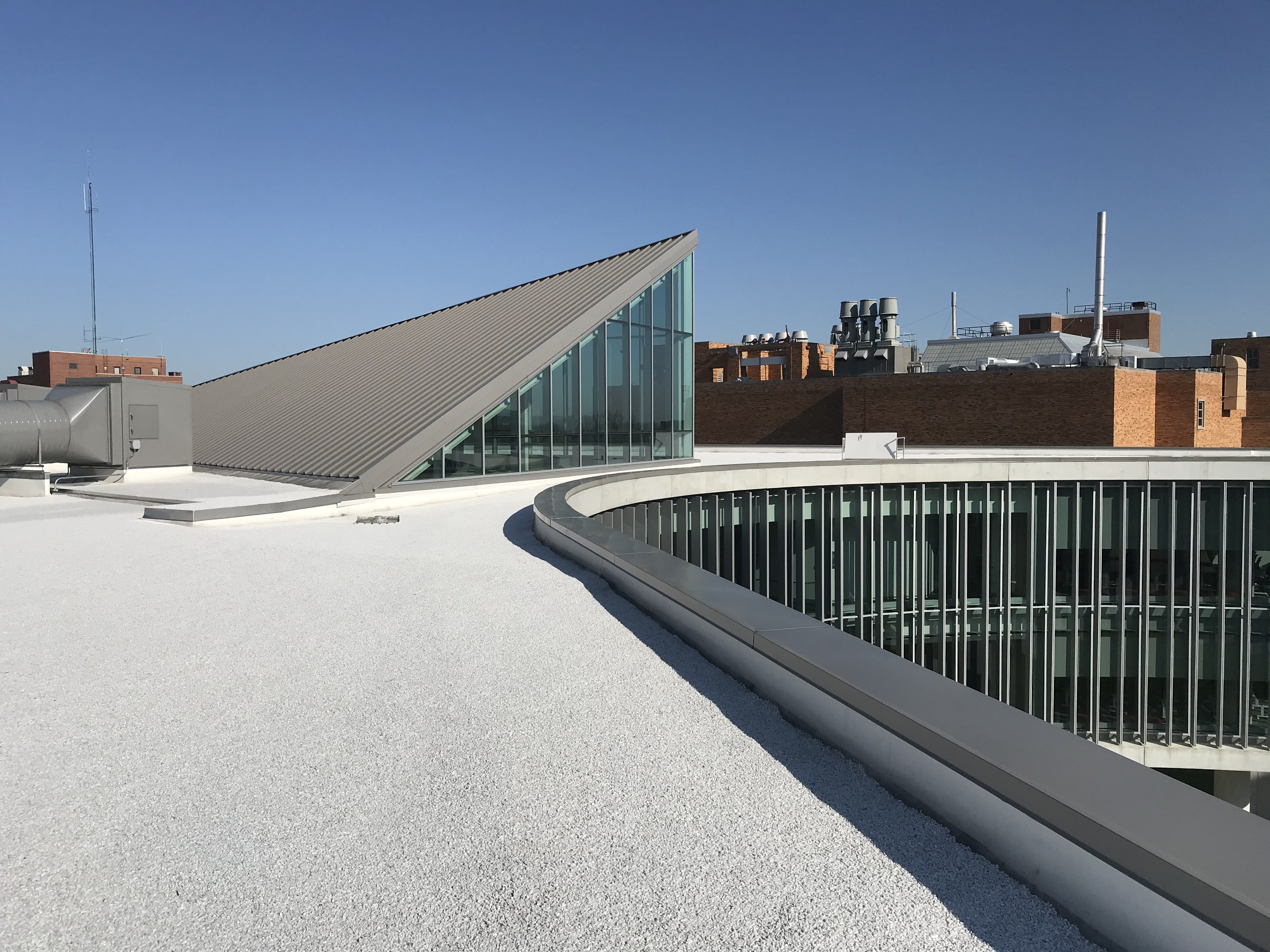When it comes to dealing with an aging or failing roof, it is easy to assume that replacement is the only option. But that’s not always the case. Thanks to modern roof restoration technologies, many roofs can be brought back to life, saving you time and money, minimizing occupant disruption and even helping the environment in the process.
Before deciding to replace your roof, it’s essential to ask these eight questions to discover if you can benefit from choosing the restoration route instead.
1. What is my existing roof made of?
The first step is understanding the materials your current roof is constructed from. Taking core samples can help you determine your roofing system’s components, including deck type, insulation type and thickness, existing vapor retarder and roofing membrane type. These details will direct what restoration methods and product options are possible for your project. Roof types like single-ply, metal roofs, Modified Bitumen (MB) and built-up roofing (BUR) systems are often excellent candidates for restoration.
2. Is my old roof strong enough to restore?
A roof is not designed to be a static entity. Changes in temperature, exposure to rain, wind and other conditions cause it to expand and contract. Over time, these forces can weaken a roof’s components. However, for many roof types, core samples and laboratory tests can assess the tensile strength, elasticity and adhesion to determine if they have the longevity required for a restoration or if, in fact, a full roof replacement is necessary.
3. What is the condition of the roof deck?
The deck is the structural foundation of your roof; it may be metal, concrete, gypsum or even wood. Inspecting it thoroughly from the inside, including any moisture damage, is critical to assess if the deck can support the existing structure and any added layers installed during restoration. Moisture is also a concern because it can get trapped in the roof's insulation, in some cases spreading damage to the roof deck itself. Where warranted, it is best practice to perform a structural analysis to assess how to proceed with the remediation. If your deck is still in good condition, restoration may be a good option.
4. Do I already have two roofs on top of each other?
If another roofing system was installed on top of the first, there could be issues with additional weight, quality of the current roofing systems, building code restrictions and material compatibility. The good news is a structural analysis and core testing can assess the condition of your roof and identify any other concerns. These issues can often be overcome in the restoration process, so don’t be afraid to consult a roofing expert and take advantage of the savings and performance enhancements restoration can offer.
5. Does my roof have wet insulation?

6. Do I have asbestos in the roof?
Asbestos is to be anticipated in older roofs, especially with built-up roofing (BUR) systems, since asbestos was once used routinely in flashing plies, roofing plies and flashing mastics. Luckily, restoration can encapsulate asbestos-containing materials, avoiding the costly and hazardous process of removal and disposal. Core sampling that is tested in an accredited lab is the best tool for detecting asbestos in your roof. If your roof meets the conditions, restoring an asbestos-filled roof by encapsulation is an approved treatment practice that is affordable and environmentally friendly.
7. Is my masonry an issue?
Before restoring or replacing a roof, examine the surrounding masonry, such as bricks and CMU blocks. Parapet walls, chimney stacks, elevator shafts and roof access doorways usually have masonry elements that can become victim to water infiltration. For adjacent masonry, RILEM tube water testing should be used to ensure that any existing leaks along walls are not the result of porous materials such as brick, block or mortar. Thermography is also an effective option for detecting roof leaks so they can be addressed before beginning the restoration process. Identifying and repairing any masonry defects before restoring a roof is essential to avoid wasting time, effort and money.
8. What are the benefits of roof restoration over replacement?
While there is no one-size-fits-all solution for failing roofs, if restoration is a possibility, the benefits can be immense. Here’s why restoration often makes more sense over a costly roof replacement:
- Cost Savings: Restoration offers significant cost savings compared to the expenses associated with replacing an entire roof.
- Faster Installation: With an easier and quicker installation, roof restoration requires less labor, reducing project timelines and disruptions for building occupants.
- Lower Environmental Impact: Restoration reduces landfill waste, helping the environment and organizations with sustainability goals.
- Budget Flexibility: Restoration budgets often fall under operational budgets instead of capital expenditure.
- Odor Reduction: Many of the industry's best solutions include no-odor and low-odor systems, making restoration a great options for sensitive environments.
Why Replace When Your Can Restore?
A tired or failing roof doesn’t always spell the end. With rapid advancements in roof restoration technologies, there’s a good chance your roof can be salvaged, bringing property owners significant cost, time and environmental benefits.
The key is to get the facts first. A comprehensive evaluation, including core sampling, moisture testing and structural analysis, will help you identify the right fit for you.
Before deciding the fate of an existing roofing system, talk to one of our experienced representatives to discover your restoration options.
